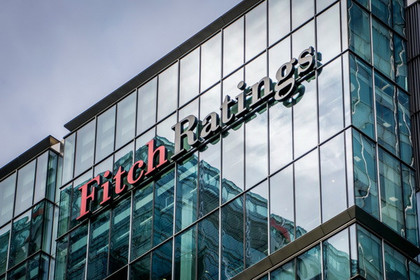Fitch Ratings has affirmed Uzbekistan’s Long-Term Foreign-Currency Issuer Default Rating (IDR) at ‘BB-’ with a Stable Outlook, the company said on Friday.
Uzbekistan’s ratings balance robust external and fiscal buffers, low government debt and a record of high growth relative to ‘BB’ rated peers against high commodity dependence, high inflation and structural weaknesses in terms of low GDP per capita and weak institutional and governance levels relative to peers.
The economy will expand by 6.2% in 2021 and growth will maintain strong momentum, averaging 5.7% in 2022-2023 (vs. forecast 3.7% for the ‘BB’ median) supported by a gradual pace of fiscal consolidation, strong investment, continued access to external financing and reforms positively impacting agriculture, construction and industrial production. The evolution of the pandemic and delays in the rollout of vaccination campaigns (16% of targeted population fully vaccinated by mid-September) present downside risks to our growth forecast.
Fitch forecasts that Uzbekistan’s overall fiscal deficit will increase to 5.2% of GDP in 2021, slightly below the government’s 5.5% target and the ‘BB’ median forecast of 5.7%. Our 2021 forecast incorporates a moderate increase in the consolidated budget deficit (general government plus the Uzbekistan Fund for Reconstruction and Development (UFRD) operations and externally financed expenditure) to 3.4% of GDP, up from 2.8% in 2020, but below the government projection of 3.7%. Although the government expects to direct higher-than-budgeted revenues (up 29% yoy in 1H21 vs. 11% budgeted for the full-year) towards additional social and capital spending, some under-execution, as in previous years, is likely.
We forecast a gradual fiscal consolidation with the overall deficit reaching 4.3% of GDP in 2022 and 3.8% in 2023, as authorities continue to emphasise spending on investment, health and education. In addition, the government is considering tax cuts (VAT and property tax) estimated at 1.1% of GDP in 2023, which we expect will only be partially compensated by improvements in tax efficiency and formalisation.
Government debt will rise to 42% of GDP (including 12% of GDP in external guarantees) in 2021, from 37% in 2020, assuming that borrowing matches the government’s plan. We project debt to reach 44% of GDP in 2023, still below the 59% ‘BB’ median forecast, but more than double its 2018 level of 20%. Government debt is almost entirely foreign currency-denominated (96% end-2021 forecast), closely linking macroeconomic stability and debt sustainability.
Mitigating factors to the rapid government debt growth include the structure in terms of maturity and costs, with official debt accounting for 92% of the external stock. In addition, the government aims to increase the share of local currency-denominated funding through more domestic debt issuance, and sold som-denominated external bonds (payable in US dollars) in 2020 and 2021. The government also has high liquid assets (25% of GDP).
The government plans to submit a ‘state debt law’ to parliament in the near term. The legislation will include some measures incorporated in the 2021 budget, such as introducing a 60% of GDP debt ceiling (for public and public-guaranteed obligations) annual borrowing limits (including PPP commitments), and the requirement to undertake corrective measures if debt rises above 50% of GDP. Authorities are also working with multilateral partners in developing a fiscal rule to improve policy predictability. Post pandemic, establishing a record of adhering to borrowing targets and implementing a sustainable fiscal consolidation strategy will be important to preserve public finances as a key rating strength.
Uzbekistan will maintain robust external buffers (forecast reserves at USD35.2 billion in 2021) with reserve coverage (12.6 months of current external payments), almost doubling that of the forecast ‘BB’ median (6.9 months) in 2022-2023. The current account deficit will remain wider than peers (6.5% of GDP in 2021 and average 5.7% in 2022-2023), driven by strong domestic demand, but continued external financing availability, FDI inflows and relative stability in gold prices (62% of international reserves) will prevent significant erosion of reserves.
Sovereign net foreign assets (12% of GDP in 2021) are still strong relative to ‘BB’ peers’, but Fitch expects this ratio to deteriorate over 2022-2023 due to increased external borrowing. Uzbekistan’s net external creditor position remains robust at 39% of GDP. However, external debt has increased rapidly, including increased borrowing from the banking sector (12% of 2021 GDP in 1H21), albeit from a low base.
We expect the Central Bank of Uzbekistan to maintain positive real rates, as part of its transition to inflation targeting. The bank is developing policy instruments to improve policy transmission, but this remains constrained by high inflation expectations, financial dollarisation, shallow capital markets and a still high share of public-sector-funded credit on preferential terms. We forecast inflation to decline to 9.8% by end-2021, but expect that strong domestic demand, salary increases, and electricity and gas tariff adjustment will keep it above rating peers (‘BB’ median of 5.4%) in 2022-2023.
As part of the government’s policy to prevent the build-up of risks to macro-financial stability, credit growth has notably slowed (21% yoy in August), reflecting the phasing out of public sector funding, reduced headroom in capital cushions (capital adequacy ratio of 17.5% at end-July with Tier 1 at 15%) and lower credit allocation to non-financial public enterprises.
Fitch’s Macro-Prudential Indicator of 2*, indicates Uzbekistan’s moderate vulnerability due to fast credit growth in recent years. Non-performing loans increased to 6.2% of the total in August (loans in the bottom three regulatory categories under local GAAP accounting), reflecting the impact of the pandemic but also some seasoning of lending dating from the 2018-2020 credit expansion. Risks to the sector originate from continued exposure to state-owned enterprises (SOE), rapid increase in external debt to fund the domestic credit expansion, an untested loan portfolio, and a large share of foreign currency-denominated loans (50%).
Uzbekistan continues to make progress in its reform agenda, particularly the restructuring of the large SOE sector in the economy, despite the impact of the pandemic and the proximity of presidential elections. Uzbekistan has signed a memorandum of understanding for the sale of Ipotheka bank (8% of total system assets) to OTP, and also sold its participation in a Coca-Cola bottling plant, as part of the process to sell state assets and enterprises.
The government will maintain a strong emphasis on poverty reduction and improvement in social conditions in parallel to the economic reform push. The complexity of the next stage of the reform agenda, especially given the ambitious targets and timeline, will challenge the institutional capacity of the government.
Presidential elections are scheduled for 24 October 2021 and incumbent president Shavkat Mirziyoyev looks likely to win a second term in office. The country is developing its institutional framework to support long-term reform efforts, but progress in governance is likely to be gradual. Spillovers from the change in government in Afghanistan remain limited in terms of potential refugee inflows or risks to political stability.
ESG - Governance: Uzbekistan has an ESG Relevance Score (RS) of ‘5’ for both Political Stability and Rights and for the Rule of Law, Institutional and Regulatory Quality and Control of Corruption. These scores reflect the high weight that the World Bank Governance Indicators (WBGI) have in our proprietary Sovereign Rating Model. Uzbekistan has a low WBGI ranking at the 19th percentile, reflecting weak rights for participation in the political process and institutional capacity, uneven application of the rule of law and a high level of corruption.












